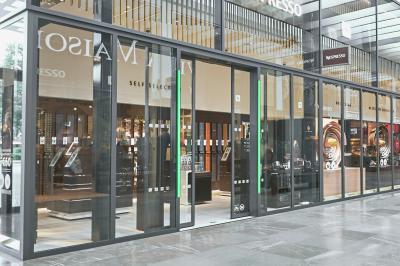

The new opportunities for digitalisation in the automatic door sector
The major challenges that construction in Spain currently faces could turn into significant opportunities for the automatic door sector. Experts from Aprimatic Doors, Geze Iberia and Nice Automatismos give us a preview of the main opportunities.
Ángel de Paz López, Director of Technical Service with Aprimatic Doors, says that digitalisation is opening a wide range of possibilities in the automatic door sector. Among these, he highlights those related to intrusion prevention, personal safety and maintenance.
As for intrusion prevention, he explains that “digitalisation will make it easier, for example, to control access to facilities through personal devices such as mobile phones, to grant or restrict access permission, as configurable as we could imagine and practically in real time, as well as to monitor who is in the facilities at any given moment”.
Regarding personal security, he says that “the artificial viewing devices associated with automatic doors can enable capacity monitoring and regulation of traffic or people, and even prevent doors from unnecessarily opening or closing if there are people in the vicinity of its sensor area”.
On maintenance, he points out that “the possibility of connecting automated devices to internet via the IoT allows us to remotely check on their status, error log, etc., and therefore, to resolve certain failures remotely, with the user’s collaboration, or to perform preventive maintenance that is flexible, depending on the rate of use of each automatic door”.
The Aprimatic Doors executive also says that “this year we are bringing to the market our new range of remote controls, with the highest levels of security and easily programmable through the installer's mobile phone, the virtual “keys” for access control, or the new pedestrian traffic doors that can also be programmed and configured through the installer’s mobile phone”.
Sustainability in construction
Óscar Conde Pérez, Connectivity Solutions Consultant at GEZE Iberia, says that digitalisation is the evolutionary process that goes with the adaptation of automatic doors to the new operating and sustainability challenges that construction will be facing. “In our daily lives we have already normalised terms such as Breeam, Leed, Passivhaus… Adding a sustainable product to a building gives us the chance to turn an automatic door into an efficient and collaborative element. And digitalising buildings and their connectivity to automatic doors (WiFi, Bluetooth, CAN Bus...) opens new possibilities for their use, that are different and perfectly compatible with regular use”.
Conde says that “at GEZE we achieved this combination with our sustainable, efficient and digital automatic doors, which allows us to integrate it in building management systems (BMS), making the door a collaborative element, not only with the building operations, but also with energy efficiency, providing new functionalities to the most widely-known open/close for users”.
As he states, “some examples of uses of automatic doors, which we are already applying on the market, are automatic capacity management using the GEZE Counter, controlled opening for automatic air renewal (CO2 monitoring systems in combination with GEZE RWA natural ventilation systems), allowing air to enter through the automatic doors for smoke and heat extraction systems in the event of a fire (in combination with GEZE SHEV systems, in accordance with UNE EN 12101-2), or remote management of evacuation routes”.
Connected and integrated door
Enrique Fernández Conesa, Commercial Director with Nice Automatismos España, explains that digitalisation provides new opportunities for the world of automatic doors, not only by offering more services, but also in relations with our clients, which in itself should be an opportunity to open new business lines”.
In his opinion, “in the digitalisation process, which we invariably must face in our sector, we have to adapt to the new market demands, with more, and faster, solutions when interacting with an automatic door”.
For example, “following market trends, with the advent of voice assistants, they will be a significant part of demand, as well as the integration of automatic doors in Smart Homes. Therefore, automatic doors will become integrated in the various home management scenarios, providing not only security, but also convenience, for end users”.
Fernández insists that “connected doors are now a reality and their significance will increase exponentially in the coming years in the residential market, but also for communities, and this will require specific training for the sector in order to meet this demand”.
Connected and integrated doors will also entail “improvements in managing maintenance and interventions due to failures, increasing efficiency and reducing the waiting times for their resolution”. On the other hand, their integration with the domotics ecosystem, as an active part of a Smart Home, “will allow users to interact with their door, both locally and remotely”.





